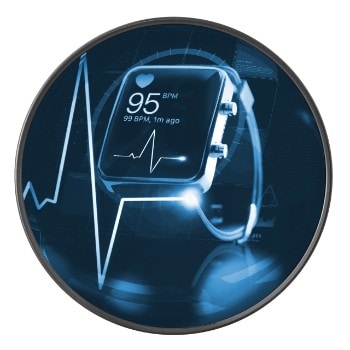Perspectives

Consumer mobile health technology
How MedTech can stake a claim in surging mHealth market
Between rising demand, breakthrough technologies, and a supportive regulatory environment, the future for medical technology (MedTech) looks bright, particularly for mobile health technology (mHealth technology). Traditional MedTech companies will need work to capture or sustain market share as nontraditional competitors target the growing mHealth market.
Explore Content
- Download the report
- Success factors for mHealth—MedTech executives weigh in
- Key mHealth capabilities
- The bottom line—inaction isn’t a choice for MedTechs
The mHealth market heats up and competition increases
What is mHealth? Any use of mobile technology such as smartphones, sensors, networks, and analytics tools to provide health care solutions throughout the patient journey is within the scope of mHealth. mHealth solutions have generated strong interest from MedTech companies, payers, pharmaceutical companies, providers, and, most importantly, patients seeking greater control over their health data and wellness.
MedTech companies face competition in the mHealth market from established companies and new entrants in three areas:
- Consumer technology: Companies that are ready to capitalize on their software and hardware expertise in consumer technologies, strong hosting and analytics capabilities, and platform stickiness among consumers and businesses.
- Business-to-business technology: Companies that already offer many software, platform, and services solutions with potential application to the mHealth market, a wealth of data and the capability to analyze it, and, in some cases, established relationships with hospital administrators and physicians.
- Pharmaceuticals: Companies with therapeutic expertise, access to health care providers (HCPs) and patients, and years of experience with digital patient engagement.
While non-MedTech companies may be seen as competitors, they bring unique capabilities and strengths to the mHealth market and also offer potential for alliances that can accelerate delivery of the benefits of mHealth across the patient journey.
Success factors for mHealth—MedTech executives weigh in
To better understand success factors in the mHealth market, Deloitte conducted interviews with executives at companies ranging from MedTech startups to large medical device makers, all engaged in diabetes, a common chronic disease requiring active patient and care team engagement.
What key stakeholders want
Patients and caregivers: With frequent communication among patients, caregivers, and HCPs, these stakeholders want an easy-to-use, personalized user experience that enables data sharing. They want to see specific data points, complete with actionable insights to help them actively manage their condition—all on a device that integrates easily with their lifestyle.
HCPs, including care teams: These key mHealth decision makers are motivated by the potential to reliably improve patient outcomes but concerned by the volume of data mHealth solutions can produce. They want to glean insights from the data in the short time they have face-to-face with each patient and they shy away from solutions with insufficient clinical study data.
Payers: Payers may have very different perspectives on whether an mHealth solution is reimbursable, depending on their understanding of patient risks and adherence, as well as how the mHealth solution improves member health and costs. The equation may be different for payers that typically manage members for a shorter time versus those, such as employers, that may manage their members for many years.
To be successful, mHealth offerings must address the requirements and preferences of these key stakeholders.
"If a tool helps a patient better manage their disease, then their health outcomes will be better, and payers will be more willing to cover the tool."
– General manager of diabetes
at life sciences company
Key mHealth capabilities
To compete in the consumer mHealth market, MedTech companies should focus on five specific capabilities related to consumers, value proposition, internal culture, and the ability to navigate the regulatory environment:
- End-to-end product and service development
- Consumer (patient) marketing, onboarding, and engagement
- Economic value story
- mHealth alignment and culture
- Regulatory affairs and quality
Potential competitors in technology and pharmaceuticals may already bring some or all of these capabilities. MedTech companies can close the gap by developing leading capabilities in one of three ways:
- Build in-house
- Build in partnership with another company (including nontraditional players)
- Acquire from another company (or acquire the company itself)
The best approach may differ by therapeutic area or a company’s specific technology, and it may depend on the level of difficulty.

The bottom line—inaction isn’t a choice for MedTechs
Regardless of approach, if MedTech companies want to be serious contenders in the mHealth market, they will need to understand the landscape and their competitive advantage.
One option not on the table? Doing nothing. MedTech companies have built their success on clinical research and development. That foundation isn’t enough in the quickly emerging mHealth market where competitors have an edge with focused initiatives, rapid development cycles, and consumer-oriented software and solutions.
Make no mistake—the race is on, and if MedTech is to win, it’s time to start building these capabilities and delivering the benefits of mHealth now.

Recommendations
Digital transformation in the MedTech industry
Digital supply networks and MedTech
Digital therapeutics
Improving patient outcomes through convergence

